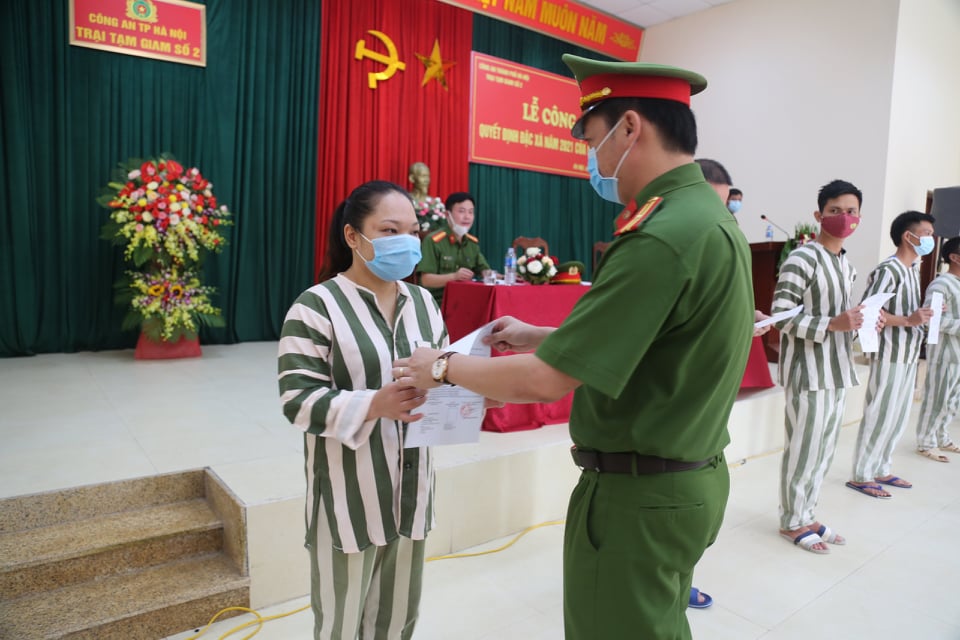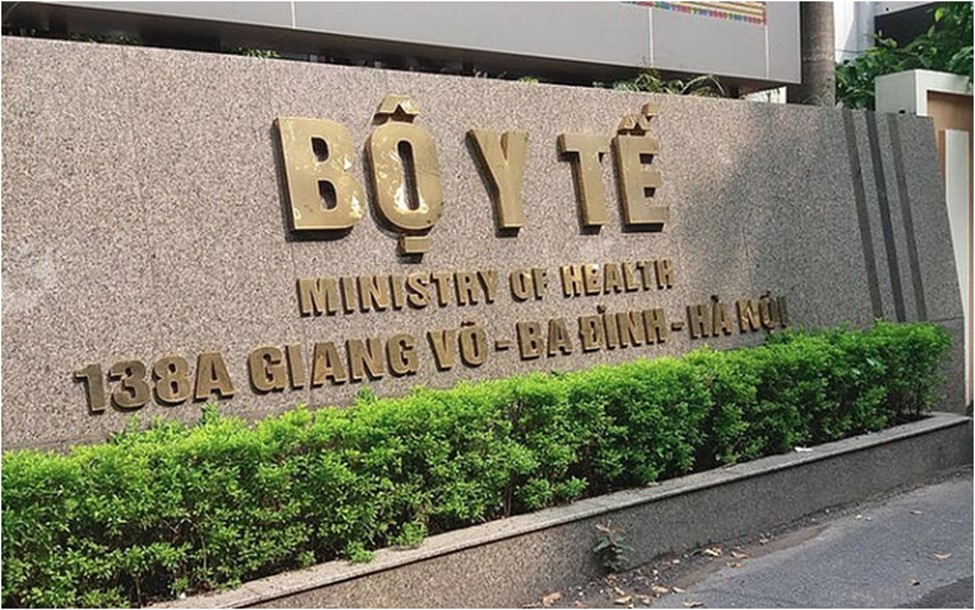Regulations on the organization of High School Entrance Examination in Vietnam from February 14, 2025
The following article will provide detailed information about the organization of High School Entrance Examination in Vietnam from February 14, 2025.

Regulations on the organization of High School Entrance Examination in Vietnam from February 14, 2025 (Image from the internet)
On December 30, 2024, the Minister of Education and Training of Vietnam issued Circular 30/2024/TT-BGDDT stipulating the regulations on enrollment for lower secondary education and upper secondary education.
Regulations on the organization of High School Entrance Examination in Vietnam from February 14, 2025
According to Article 13 of the Regulations issued with Circular 30/2024/TT-BGDDT regarding the organization of high school entrance examinations in Vietnam:
(1) Examination Subjects, Test Papers
- The number of examination subjects, test papers includes: Mathematics, Literature, and one additional subject or test paper chosen by the Department of Education and Training from one of the following two options:
+ The third subject is selected from subjects assessed with numerical scores in the lower secondary education program, ensuring that the same third subject is not selected for more than three consecutive years;
+ The third test paper is a combination of several subjects chosen from subjects assessed with numerical scores in the lower secondary education program.
For high schools under the Ministry of Education and Training, universities, or research institutes organizing separate entrance examinations, the third subject or test paper is chosen by the managing body directly.
- The third subject or test paper is announced after the end of the first semester but no later than March 31 each year.
- Duration of examination: Literature: 120 minutes; Mathematics: 90 minutes or 120 minutes; third subject: 60 minutes or 90 minutes; third test paper: 90 minutes or 120 minutes.
- Examination content is based on the lower secondary education program, primarily from grade 9.
- For admission to specialized high schools, students must take the subjects and test papers stipulated in this section and one specialized subject. Each specialized subject has a separate examination paper corresponding to the lower secondary education subject program, ensuring the selection of students with aptitude in that specialty.
(2) Examination Paper Preparation
- The process of preparing examination papers must ensure safety and confidentiality at all stages: preparation, printing, distribution, transfer, and storage of examination papers. Examination papers must be accurate, scientific, and educational; there must be official examination papers and backup papers; each exam paper must have an answer key and marking guidance.
- The Examination Paper Committee is established by the Director of the Department of Education and Training, comprising: the Chairman is a leader of the Department; the Vice-Chairman is a leader of the Department or leaders of subordinate offices within the Department; secretaries, drafter of examination papers, reviewers of exam papers; police forces; service, medical, and security staff. Secretaries, exam paper drafters, and reviewers are specialists, managers, lecturers, or teachers with suitable expertise, who understand the subject program at the lower secondary education level. Each subject has at least one exam paper drafter or reviewer from the lower secondary education level.
For high schools under the Ministry of Education and Training, universities, or research institutes organizing examinations, the Examination Paper Committee is formed by the Minister of Education and Training, University Director, University President, or Research Institute Director directly managing.
- Responsibilities and authority of the Examination Paper Committee: develops a work plan; assigns tasks to committee members; organizes exam paper drafting; organizes exam paper reviews; approves official and backup exam papers, and marking guidance for official and backup exam papers; handles or recommends handling of unusual incidents in the process of preparing examination papers; establishes and maintains committee records; ensures the security, safety, and confidentiality of exam papers as per regulations; considers, decides, or recommends rewards and penalties for committee members according to regulations.
(3) Supervising Examinations
- Exam supervision work must ensure fairness, safety, and seriousness. The supervision process and assignment of responsibilities among participants must be complete, clear, ensuring independence and objectivity between tasks; effective measures to prevent cheating in examinations must be implemented. The structure of invigilators and supervision invigilators must be suitable for the number of examination rooms. The number of candidates in each examination room does not exceed 24, with 2 invigilators assigned to each room.
- The Examination Supervision Committee is established by the Director of the Department of Education and Training, comprising: the Chairman is the Principal or Vice-Principal of a high school or secondary school; the Vice-Chairman is the Principal, Vice-Principal, or Department Head of a high school or secondary school; secretaries and supervision invigilators are lecturers, teachers, or specialists; police forces; service, medical, and security staff.
For high schools under the Ministry of Education and Training, universities, or research institutes organizing examinations, the Examination Supervision Committee is formed by the Minister of Education and Training, University Director, University President, or Research Institute Director directly managing.
- Responsibilities and authority of the Examination Supervision Committee: develops a work plan; assigns tasks to committee members; organizes training for members and candidates to understand, grasp, and execute exam organization instructions and other relevant documents; organizes exam supervision; handles or proposes handling of unexpected incidents during supervision; establishes and maintains committee records; ensures the security, safety, and confidentiality of exam papers as per regulations; considers, decides, or recommends rewards and penalties for candidates and committee members according to regulations.
(4) Grading Examinations
- Grading must ensure safety and confidentiality of exam papers at all stages: receiving, storing, masking, and organizing grading. Grading must be accurate and objective according to the answer key and grading guidance. For essay grading, common assessment for at least 10 exam papers must be organized; dual independent grading rounds must be organized. For multiple-choice grading, if software is used, training for graders on using the software is required. Multiple-choice grading software must ensure accuracy, and scientific validity, and must be verified before use.
- The Grading Committee is established by the Director of the Department of Education and Training, comprising: the Chairman is a leader of the Department; the Vice-Chairman is a leader of the Department or subordinate offices within the Department; secretaries, graders; police forces; service, medical, and security staff. Secretaries and graders are lecturers, teachers, specialists; essay graders must understand the subject program at the lower secondary education level; multiple-choice graders must proficiently use grading software.
For high schools under the Ministry of Education and Training, universities, or research institutes organizing examinations, the Grading Committee is formed by the Minister of Education and Training, University Director, University President, or Research Institute Director directly managing.
- Responsibilities and authority of the Grading Committee: develops a working plan; assigns tasks to committee members; organizes masking; organizes grading; merges masking, uploads scores; handles or proposes handling of unusual incidents during grading; establishes and maintains committee records; ensures the security, safety, and confidentiality of exam papers as per regulations; considers, decides, or recommends rewards and penalties for committee members according to regulations.
(5) Re-Grading Examination Papers
- Re-grading of examination papers must ensure the safety and confidentiality of papers at all stages: retrieval, transfer, storage, and re-grading; the re-grading process is executed as in the grading process.
- The composition, responsibility, and authority of the Re-Grading Committee are executed as per the composition, responsibility, and authority of the Grading Committee as stipulated in clause 4 of this Article. Re-Graders of the Re-Grading Committee must not coincide with graders in the Grading Committee.
(6) Admission Score for grade 10 of high school is the total score of the examination subjects, test papers converted to the 10-point scale for each subject, test paper. Score announcement is conducted simultaneously with the release of the exam results.
(7) The Department of Education and Training, based on the regulations of this Regulation, specifically regulates the preparation of exam papers, supervision, grading, and re-grading of exam papers suitable to actual conditions. The high schools under the Ministry of Education and Training, universities, or research institutes organizing separate examinations shall implement according to the guidance of the Ministry of Education and Training, universities, or research institutes directly managing, or follow the regulations of the Department of Education and Training where the school headquarters is located.
- Number of deputy directors of departments in Vietnam in accordance with Decree 45/2025/ND-CP
- Cases ineligible for pardon in Vietnam in 2025
- Decree 50/2025 amending Decree 151/2017 on the management of public assets in Vietnam
- Circular 07/2025 amending Circular 02/2022 on the Law on Environmental Protection in Vietnam
- Adjustment to the organizational structure of the Ministry of Health of Vietnam: Certain agencies are no longer listed in the organizational structure
- Vietnam aims to welcome 22-23 million international tourists in Vietnam in 2025
-

- Number of deputy directors of departments in Vietnam ...
- 15:04, 05/03/2025
-

- Cases ineligible for pardon in Vietnam in 2025
- 14:43, 05/03/2025
-

- Decree 50/2025 amending Decree 151/2017 on the ...
- 12:00, 05/03/2025
-

- Circular 07/2025 amending Circular 02/2022 on ...
- 11:30, 05/03/2025
-

- Adjustment to the organizational structure of ...
- 10:34, 05/03/2025
-

- Notable new policies of Vietnam effective as of ...
- 16:26, 11/04/2025
-
.Medium.png)
- Notable documents of Vietnam in the previous week ...
- 16:21, 11/04/2025
-
.Medium.png)
- Notable documents of Vietnam in the previous week ...
- 16:11, 02/04/2025
-
.Medium.png)
- Notable new policies of Vietnam to be effective ...
- 16:04, 02/04/2025
-
.Medium.png)
- Notable new policies of Vietnam effective from ...
- 14:51, 21/03/2025

 Article table of contents
Article table of contents
